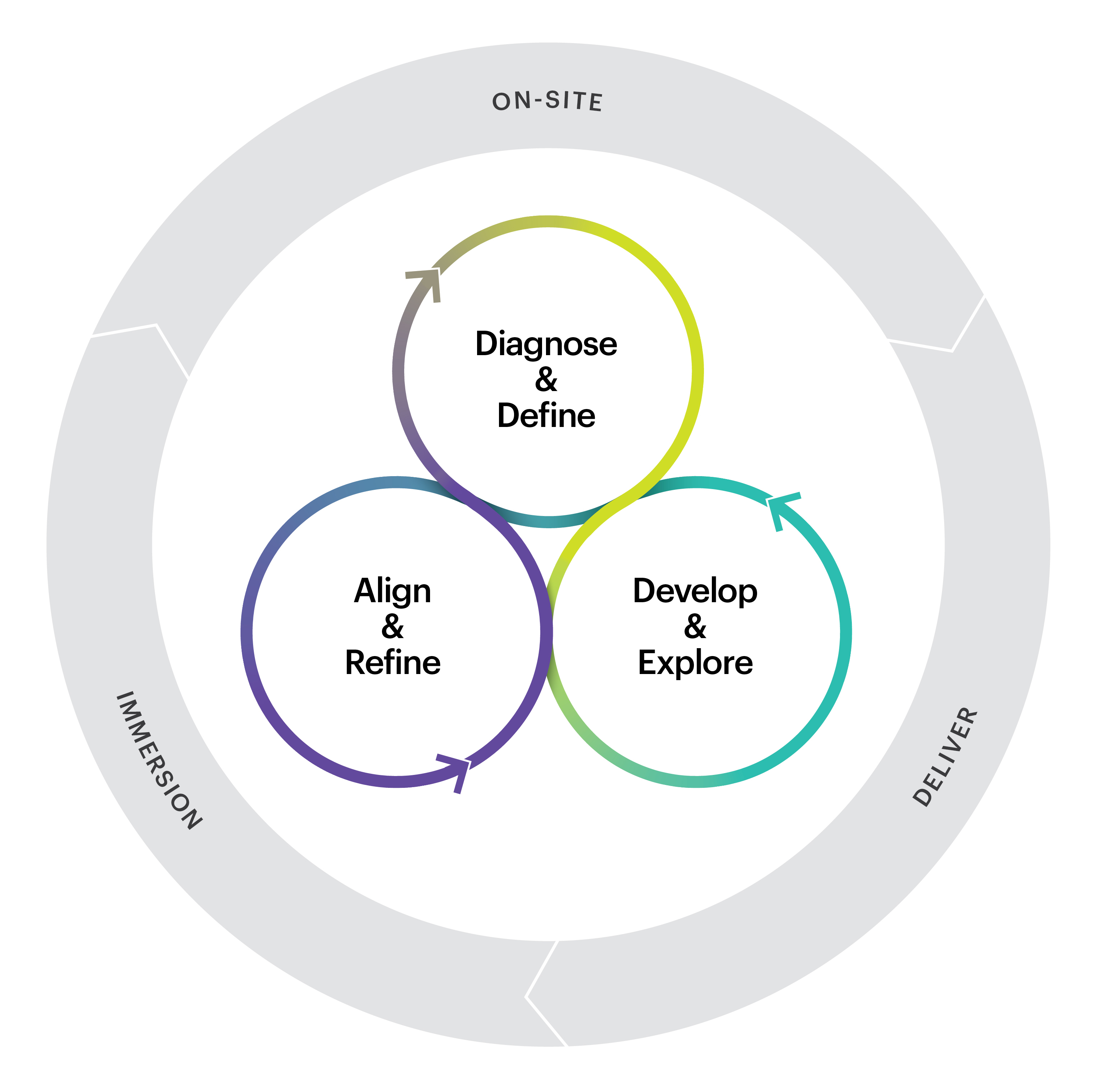Purpose-led Brand Strategy that Masters the Intangibles, Masters Markets
A purpose-led brand strategy has the power to optimize the present and future value of your business. When your brand actively embodies all the true and meaningful aspects of your corporate decisions, policies, and actions, it not only brings new energy to your current competitive efforts, it also signals a brighter and more energizing future to the people vital to your company’s success.
Your brand houses your company’s intangible value
Everyone knows there’s a link between the perceived value of your “intangible assets” and the market value of your company. Your brand is one of the many intangible assets in your company, and it serves a very important role. In fact, your brand is the house in which virtually all of your other intangible assets tend to live.
This is because your brand is the place where customers, employees, and investors store all the information, data, experiences, and collective good and worth they attach to your company. This collective good and worth can be seen as a positive energy that propels your brand forward, based on the trust and confidence that energy builds.
Value builds as the energy grows
The opportunity is to bring all that energy together through a meaningful purpose that not only increases the value of the goodness your business does now, but also inspires your organization to pursue new avenues of meaning. A meaningful purpose helps rally and align your people so they create more meaning within and outside of the organization. These efforts, which make your organization a more rewarding and gratifying place in which to work, have a compound effect on the value that flows from your intangible assets.
Don’t leave your intangible assets to their own devices, proactively manage them for greater success.
Smart leaders strive to optimize the value of their intangible assets. The most credible way to do this is to make stronger and more pervasive contributions to the collective well-being through individual, social, and environmental initiatives. These efforts will signal both social responsibility and a long-term view for the brand. They will energize your organization, and empower it in new ways. They will help you forge stronger connections with customers, attract new prospects, make the work of your employees more meaningful and gratifying, bring in the new talent your organization needs, and give investors the confidence they need to stick by your brand over the long-term.
Emotive Brand is a San Francisco branding agency.
Img credit: Motherbird
























